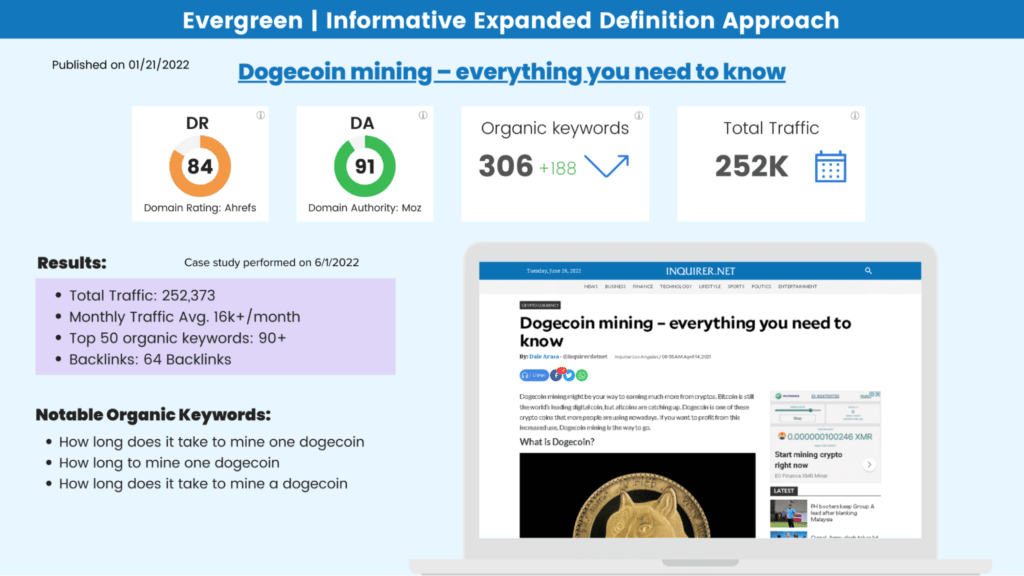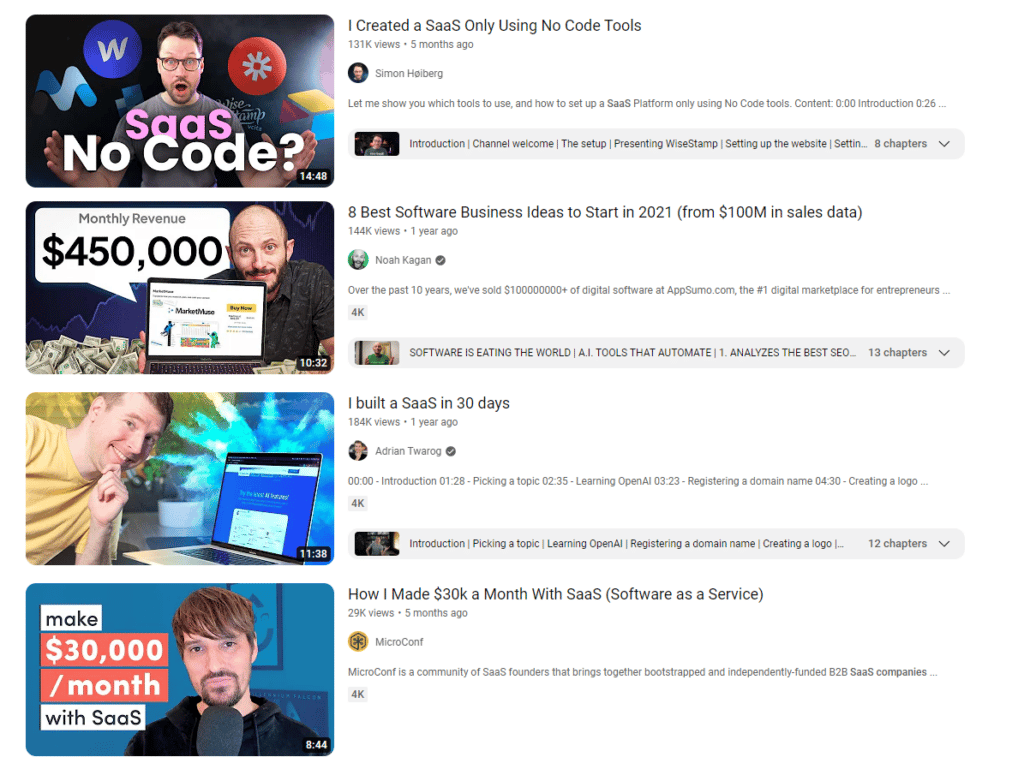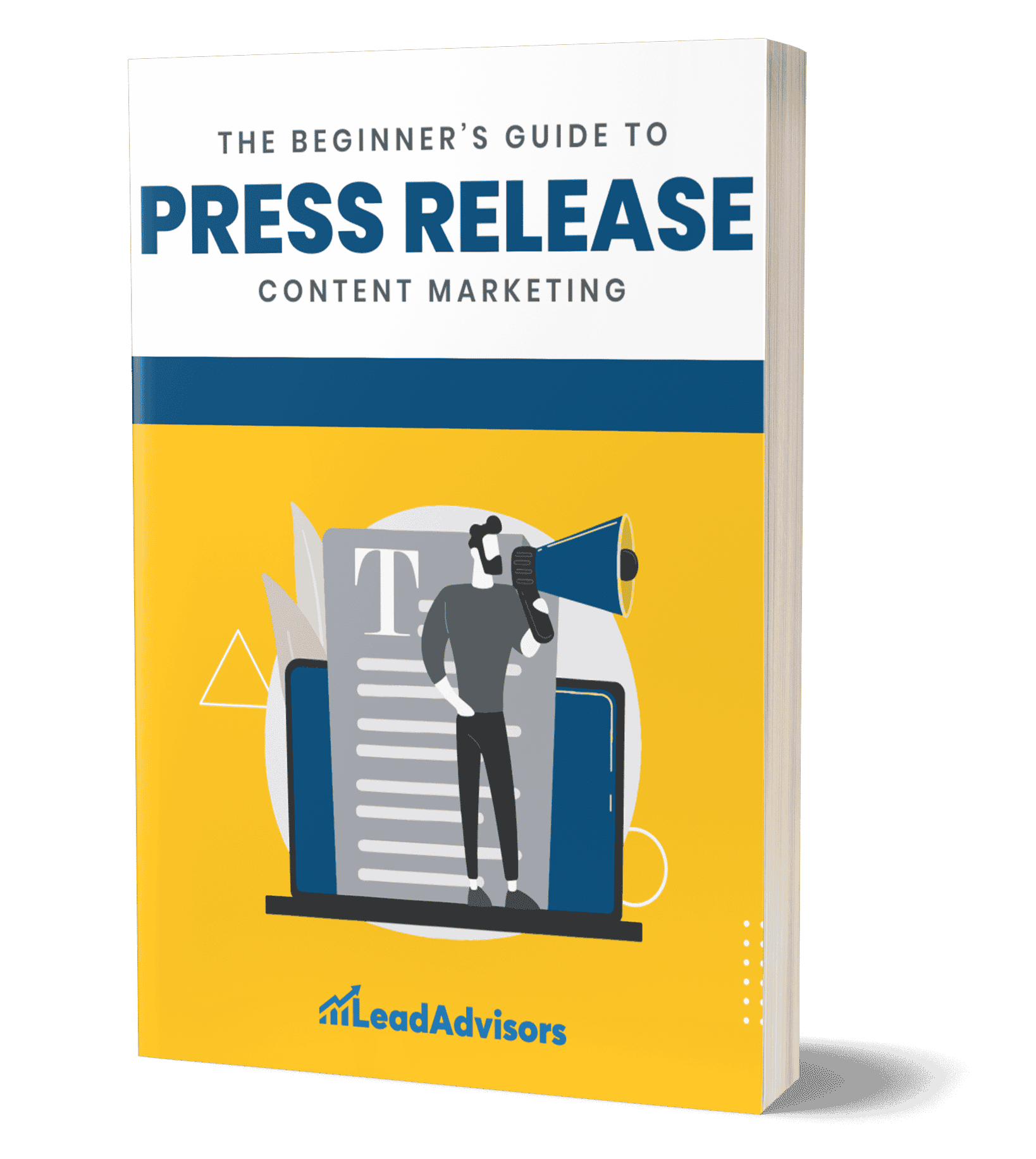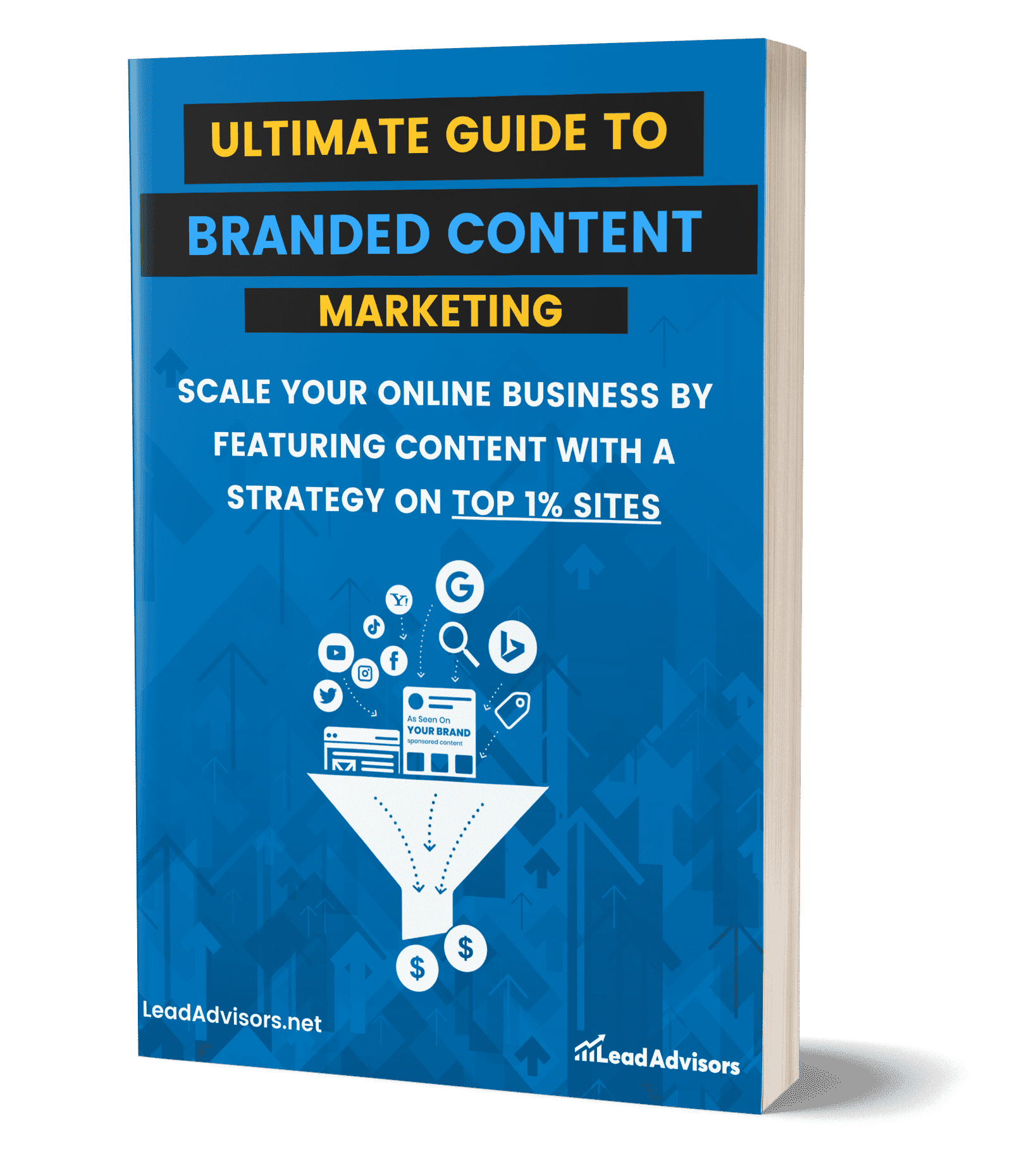Are you struggling to create effective content for your SaaS marketing campaigns? Do you find writing compelling and persuasive copy challenging to convert your target audience into paying customers? If so, then you’ve come to the right place.
Content marketing is one of the most efficient ways to generate leads and revenue for your SaaS business, but it can be grueling to know where to start. According to recent studies, high-quality content marketing can translate to an ROI of 448% or more for SaaS brands, and 98% of top-performing SaaS companies have blogs. Long-form content should make up most SaaS content marketing work—top-performing content is 12% longer.
However, 65% find it challenging to craft engaging content, and 62% say they need help consistently producing content.
Luckily, we’ve generated a 10-step guide to lucrative SaaS content marketing. This guide will take you from creating an effective strategy to measuring your success so that you can see an increase in leads and revenue from your content marketing campaigns.
GET A FREE COMPETITIVE ANALYSIS!
How Does Content Marketing Differ for SaaS Companies?
SaaS companies have a unique challenge when it comes to content marketing. Unlike product-based companies, they cannot rely on product demos or case studies to sell their products. Instead, they must create compelling content that speaks to the needs of their target customers. It can be challenging but can be overcome with careful planning and execution.
SaaS companies should focus on creating content that is educational and informative. This type of content will help potential customers understand the software’s benefits.
Additionally, Saas companies should focus on creating content targeted at specific customer segments. By segmenting their audience, Saas companies can ensure they create content relevant to their target customers’ needs.
By following these tips, Saas companies can create a content marketing strategy that will help them to reach their target customers and convert them into paying customers.
You May Also Like: How to write Call to Action that Converts
SaaS Content Marketing Made Simple: 10 Key Steps
In today’s digital world, content marketing has become essential to any successful SaaS (Software as a Service) business strategy. However, creating an effective content that engages your audience and drives conversions can be challenging. That’s why we’ve put together this simple guide to help you create a winning SaaS content marketing strategy in 10 key steps.
Here are ten essential steps to create successful Saas content marketing campaigns:
1. Determine Whether Content Marketing Is Suitable for Your SaaS Business

As the Saas business model has become increasingly popular, effective content marketing strategies are required. After all, Saas companies are built on recurring revenue, and content marketing can be a powerful tool for driving that revenue. But before embarking on a content marketing strategy, it’s crucial to determine whether it’s a proper fit for your business.
Here are three key considerations:
Target Audience
First, take a look at your target audience. What type of content would they be interested in? Would they be more likely to respond to educational articles or more lighthearted blog posts? Once you understand your audience well, you can start developing content that resonates with them.
Marketing Goals
Next, consider your goals. What do you propose to achieve with your content marketing strategy? Are you looking to generate leads or increase brand awareness? Once you apprehend what you want to accomplish, you can create content designed to meet those goals.
Resources
Finally, take a look at your budget. Content marketing can be costly, so it’s vital to ensure you have the resources to execute a successful strategy. If you’re on a compact budget, there are still plenty of options available; be sure to choose cost-effective methods like guest blogging or social media marketing.
Ultimately, whether or not content marketing is right for your Saas business comes down to several factors. By assessing your audience, goals, and budget, you can decide whether this type of marketing is right for you.
Read More: The Ultimate Guide to Pillar Content Strategy for Business Owners
2. Define Your Content Marketing Goals, Success Criteria, And KPIs
Content marketing has become an essential aspect of any successful Saas marketing strategy. However, to ensure that your content marketing efforts yield meaningful results, it’s crucial to establish clear goals, success criteria, and key performance indicators (KPIs).
Your content marketing goals should be specific and well-defined. They should also be measurable, which means you must have a way to quantify your progress towards achieving those goals. Additionally, your goals should be attainable, relevant, and time-bound. Following the SMART framework ensures that your goals are realistic, aligned with your overall business objectives, and have a specific timeline for achievement.

Once you have set your content marketing goals, the next step is to define success criteria. Success criteria are the specific milestones or achievements that will indicate that you have reached your goals. For example, if your goal is to increase website traffic, your success criteria could be to reach a specific number of visitors per month or to achieve a particular bounce rate.
KPIs are the metrics that will help you track your progress towards achieving your goals and success criteria. These metrics can be anything from website traffic and engagement rates to lead conversion rates and customer retention rates. KPIs allow you to track the effectiveness of your content marketing strategy over time, identify areas that need improvement, and make data-driven decisions to optimize your efforts.
By defining your content marketing goals, success criteria, and KPIs, you create a roadmap for your content marketing strategy. This roadmap will help you stay on track, measure progress, and identify areas that need improvement. Ultimately, taking the time to establish a solid foundation for your content marketing strategy will increase your chances of achieving lasting success.
3. Discover Your Audience Needs And Problems

Saas content marketing is about conveying the accurate message to the right audience at the right time. You must profoundly understand your audience’s needs and problems to do this effectively. Only then can you develop content that provides real value and solves their specific issues.
How to Get a Deeper Understanding of Your Audience?
There are a few methods you can go about this:
Talk to your customers directly.
This can be completed through surveys, interviews, or casual conversations. Try to understand not only what their needs are but also how they currently solve those needs (or how they try to solve them).
Take a look at your website data.
Find which pages get the most traffic and engagement and understand why. What needs or problems are those visitors trying to solve?
Look at your competition.
See how they’re addressing the needs of your shared audience, and try to find any gaps in their coverage.
By taking a moment to conclude the needs and problems of your audience, you’ll be in a better position to create content that truly resonates with them. As a result, you’ll see higher engagement rates and more conversions.
4. Build an Effective Marketing Content Funnel

To effectively drive traffic and attract leads, a Saas business must also incorporate search engine optimization (SEO) into their content marketing funnel. A strong SaaS SEO strategy can guide users through every stage of the funnel—from awareness to conversion especially when aligned with key SEO trends in 2025 that shape modern search behavior.
A well-executed SEO strategy can increase your website’s visibility in search engine results pages, making it easier for potential customers to find you.
Start by researching the keywords that your target audience is searching for. Use these keywords strategically in your content to optimize it for search engines. This will help increase your website’s visibility and bring more traffic to your site, especially when paired with strong fundamentals like those covered in this guide on mastering technical SEO.
Next, create high-quality content that provides value to your audience. This can include blog posts, case studies, whitepapers, and more. Make sure your content is relevant, informative, and engaging, and includes relevant keywords in a natural way. This will help your content rank higher in search engine results pages and attract more traffic to your site.
As readers move further down the funnel, you can create more targeted content that speaks directly to their specific pain points and needs—paired with compelling call-to-action examples to drive engagement and conversions. This can include product demos, free trials, and other types of content that provide a deeper understanding of your product or service.
Finally, make sure to track and analyze your SEO performance regularly. Use tools like Google Analytics to monitor your website’s traffic, search engine rankings, and conversion rates—while ensuring your site meets the top SEO best practices for mobile in 2023 for a seamless user experience. This will help you make data-driven decisions about your content marketing strategy and optimize it for even better results.
In conclusion, creating an effective SEO content marketing funnel is essential for any Saas business looking to drive traffic and attract leads. By creating high-quality content that is optimized for search engines, you can attract more potential customers and guide them towards a conversion. So take the time to research your keywords, create engaging content, and track your performance, and watch your business grow!
DOWNLOAD OUR FREE E-BOOK ULTIMATE GUIDE TO EVERGREEN CONTENT MARKETING.
5. Target Long-Tail Keywords In Your Content Strategy
To be effective, your Saas Content Marketing Strategy must be aligned with your business goals. One way to ensure this alignment is to target long-tail keywords in your content. Long-tail keywords are specific, precise phrases that accurately describe what your potential customer is looking for. Furthermore, by creating content that targets these keywords, you can provide value to your potential customers and build trust and credibility with them.
How to Find Long-Tail Keywords for Your SaaS Content Marketing Strategy?
First, start with a seed list of keywords related to your product or service—especially if you’re offering digital services such as mobile application development, where niche queries can reveal valuable intent. To get started, you can utilize a tool like Google AdWords Keyword Planner or Ahrefs’ Keyword Explorer. Once you have your seed list, it’s time to begin brainstorming variations and expansions of those keywords. For example, if your product is a CRM system, some long-tail keyword variations could be “CRM software for small businesses” or “CRM software for sales teams.”

Another great way to find long-tail keywords is to look at the search results for your seed list keywords and see what people are searching for. For example, if you search for “CRM software,” you’ll see several related searches, including “free CRM software” and “CRM software for small businesses.” You could use these potential long-tail keywords in your Saas content marketing strategy.
Finally, remember to use negative keywords in your keyword research. Negative keywords are words or phrases that you don’t want your ads to show up for. For example, if you’re selling CRM software for small businesses, you wouldn’t like your ad to appear when someone searches for “free CRM software.” Adding negative keywords to your campaigns can help you avoid wasting money on unintentional clicks and improve your return on investment.
6. Strengthen Your Thought Leadership and Get Creative with Content Ideas
As a Saas company, one of your main goals should be establishing yourself as a thought leader in your industry. It can help you attract more customers and build trust with your existing ones. But how do you go about doing this?
One way is to create content that is both informative and evergreen. This could include blog posts, infographics, eBooks, white papers, etc. It’s crucial to ensure that your content is relevant to your target audience and provides value. Otherwise, people will tune it out.
Another way to establish yourself as a thought leader is to get creative with your content ideas. This could involve creating something new or putting a fresh spin on an existing idea. The goal is to be noteworthy from the crowd and get the audience talking about your brand.
Read more: Anatomy of an Effective Content Production Process
7. Build Authority With Earned Media

Saas content marketing is all about building authority. And one of the best tactics to build authority is through earned media. Earned media is any coverage you get from a third-party source, like press coverage in an industry publication or a positive review from a satisfied customer—both of which can be amplified using effective blog outreach strategies for website authority.
Because it’s coming from an external source, earned media can be compelling in building trust and credibility with your audience. And that’s essential for any Saas business that wants to succeed in the long term. So if you’re looking to build authority and create a Saas content marketing strategy to help you succeed, make sure to focus on earned media. It can make all the difference.
To effectively leverage earned media and build authority for your Saas business, here are some steps you can follow:
- Identify your target publications and journalists – Research the publications and journalists in your industry who are likely to be interested in your product or service. Make a list of these publications and the journalists who cover your industry.
- Craft your story – Develop a unique and compelling story that will pique the interest of your target publications and journalists. This can include listicles, how-to guides, news about a new product release, a customer success story, or a unique approach to solving a common industry problem.
- Reach out to the media- Once you have your story, reach out to the journalists on your list and pitch your story to them using a targeted media outreach strategy to increase your chances of coverage. Be sure to personalize your pitch and explain why your story is relevant to their audience.
- Leverage social media- Use social media to amplify your earned media coverage. Share links to your coverage on your social media channels and tag the publication and journalist to increase visibility.
- Monitor your coverage- Keep track of any earned media coverage you receive and use it to build your authority. Share links to your coverage on your website, in your email newsletter, and on social media.
By following these steps, you can effectively leverage earned media to build authority and credibility for your Saas business. Just remember to stay focused on providing value to your audience and developing unique and compelling stories that will capture the attention of the media. With the right approach, earned media can be a powerful tool for building your domain authority and brand and driving long-term success.
Read more: Affiliate Editorial Reviews: How to Get Them & Why They Matter
8. Create Link-Worthy Content Assets On Your Site

To earn links from high-quality websites, you need to create link-worthy content assets on your site. Original research, Help articles, and landing pages receive the most backlinks on average.
There are a few different types of content that tend to perform well in this regard:
Evergreen content is the type of content that remains relevant and useful over time. It needs to be updated like news articles or seasonal guides. Instead, it provides timeless information that people can reference again and again. This makes it an excellent asset for link building because it has the potential to drive traffic and earn links for months or even years after it’s been published.
Long-form blog posts are another excellent option for link-building. In general, in-depth articles that offer readers a wealth of information on a given topic, the more valuable it is considered to be. So if you can write comprehensive blog posts that thoroughly cover a topic, you’re likely to earn high-quality links. Make sure to avoid content cannibalization when writing.
Original research and reports can be an effective way to showcase your company’s expertise and can also be quite link-worthy. If you have data or insights that are unique and original, other websites will want to link to them. This is especially true if credible sources back up your data.

Finally, case studies are an excellent way to demonstrate the results you have achieved for your clients and tend to be very persuasive and can help you earn links from websites looking for trustworthy information. If you can provide detailed, real-world examples of your product or service in action, you’re likely to acquire some quality links.
All these types of content can help you earn valuable inbound links, which is also critical in maintaining a healthy domain reputation—so don’t forget to monitor factors like spam score in your SaaS content marketing strategy.
Dig Deep: How to Write Engaging SaaS Blogs: 5 Tips to Hook Your Readers
9. Create Your Distribution Strategy and Tracking Metrics

As a Saas company, your content marketing strategy needs to be focused on creating and distributing content that your target audience will find valuable. But to ensure that your content reaches the right people, you need to have a clear distribution strategy in place. Without a plan for putting your content in front of your audience, it will be multifaceted to measure your success.
There are several different channels that you can utilize to distribute your content, and the best strategy will likely vary depending on your industry and target audience. But some of the most common methods for Saas companies include SEO, promotion with branded content, social media, and email marketing. Once you’ve identified the channels most likely to reach your target audience, you must begin thinking about how you will track your progress.
There are a number of metrics that you can harness to gauge the success of your Saas content marketing strategy. Some of the most fundamental include website traffic, leads generated, conversion rate, and social media engagement. By closely monitoring these metrics and conducting a 3-step content audit for ecommerce conversion rates, you’ll be able to refine your content strategy for optimal performance.
10. Repurpose your content

If you’re like most people, you presumably have a lot of content sitting around accumulating dust. But fortunately, you can repurpose that content and use it to achieve your Saas marketing goals.
Look at your existing content and see if any pieces could be repurposed for a different audience or format. You can use a handful of methods to repurpose your content. One is to republish it on another platform. If you have an article that did well on your blog, consider posting it on Medium or LinkedIn Pulse. 94% of B2B SaaS brands utilize LinkedIn to distribute content.
You can also break up long-form content into smaller pieces, such as infographics, carousels, and reels then share them as social media updates. Top SaaS posts are shared on social media 246 times.
You could also take an outdated blog post and turn it into a video or podcast episode. 18% of SaaS companies have their own podcast. Or, you could take a white paper and create an e-book. The possibilities are endless – but the point is, don’t let your existing content go to waste. By repurposing your content in this way, you can reach new audiences, breathe new life into it and get more mileage out of your existing material.
Get Started
Content marketing is a compartmentalized process, but following these ten steps will assist you on the path to success. Once you have your foundation in place, it’s time to start crafting content that will attract and engage your audience. Keep in mind that quality trumps quantity.
If you need assistance with any step of the process, our team of experts is here to help. Contact us today to set up a demo.
We’re always happy to chat and answer any questions you have!
Updated: April 25, 2023











